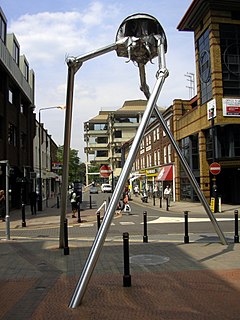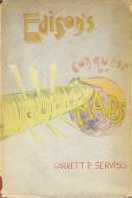It is proposed that this article be deleted because of the following concern:
If you can address this concern by improving, copyediting, sourcing, renaming, or merging the page, please edit this page and do so. You may remove this message if you improve the article or otherwise object to deletion for any reason. Although not required, you are encouraged to explain why you object to the deletion, either in your edit summary or on the talk page. If this template is removed, do not replace it . ContentsThe article may be deleted if this message remains in place for seven days, i.e., after 15:46, 23 January 2020 (UTC). Find sources: "Mor-Tax" – news · newspapers · books · scholar · JSTOR |
| Mor-Tax | |
|---|---|
| ' War of the Worlds' location | |
| First appearance | War of the Worlds (1988-1990) |
| Created by | Greg Strangis |
| Information | |
| Type | Terrestrial planet |
| Moon(s) | 3 |
This article possibly contains original research .(May 2018) (Learn how and when to remove this template message) |
The topic of this article may not meet Wikipedia's general notability guideline .(June 2015) (Learn how and when to remove this template message) |
Mor-Tax is the name of the planet on which the aliens from the first season of the War of the Worlds TV series, the Mor-Taxans, originate. While the show's existence as a continuation from the 1953 film would make the aliens Martians, the first season rewrites this origin due to the supported fact that no intelligent life is evident to exist or have existed on Mars. Their connection to Mars is never mentioned onscreen, though creator/executive producer Greg Strangis has stated in an interview that the aliens used Mars only as a staging point to launch their invasion on Earth; [1] the veterans of the Grover's Mill militia obliviously call them Martians.
It is established that the planet lies within Pleiades in the Taurus constellation, "beyond time and beyond space." This system, which is never named, also includes a planet called Qar'To that is the homeworld of an unidentified alien race that sends a synth to Earth to destroy the aliens. While the Pleiades cluster lies 440 light-years away, it is stated by the rogue alien Quinn to be 40 light-years away, thus the Mor-Taxans are somehow able to expedite the travel.
The synth from Qar'To is said to travel the distance through a space in dimensions and it is established that it can also return through the same space within a year. It is not known if those from Mor-Tax are either unaware of this passage, or are somehow unable to travel through this same space themselves.
The planet has three moons and is the third planet from its sun, providing a possible origin for their religious, cultural, and scientific fixation with the number three. [2] The star around which the planet revolves is dying, which is the reason for the aliens leaving it to make refuge on Earth. Ironically, though they seek occupancy on Earth, the brightness of the sun is higher in contrast to their own, thus suffering from photophobia, made evident in their host bodies wearing sunglasses to aid them. The length of Mor-Tax's seasons and days are unknown. While it is stated the mating season is every nine years, it is not clarified if this is in reference to the time on Earth or on Mor-Tax.
The planet is never seen or described in any graphic detail, but based on general description, it is a garden planet ripe with vegetation, an ancient world as the alien Quinn calls it. Because of this, the native species has a vegetarian diet. It is once hinted that some of the plants have a fairly high level of intelligence - possibly more so than human beings. It is possible that one of the Quinn's art resembles planet Mor-Tax as seen in the episode "Prodigal Son" (some statue with planet and small three bodies around it). It is also possible that we see Mor-Tax environment in short Malzor's flashback in the episode "The Obelisk".
An individual from this planet and anything related to them such as their technology is referred to as being Mor-Taxan ; though, the race as a collective whole would be referred to as the Mor-Tax.
In the second season of the series, a new set of aliens arrive on Earth, said to be the same race as those from Mor-Tax. However, these aliens call the planet Morthrai, and themselves Morthren, which is seen exploding in the very first shot of the premiere episode. In the final episode, it is stated that the Morthren were unaware of any other intelligent lifeforms until the discovery of Earth in 1945 and it took sometime less than a year to reach the planet from theirs - statements which both deviate from the information given above.









